- Home
- Fredric Brown
Honeymoon in Hell
Honeymoon in Hell Read online
HONEYMOON IN
HELL
BY FREDRIC BROWN
BANTAM BOOKS
TORONTO • NEW YORK • LONDON • SYDNEY
IMAGINE . . .
Ghosts, gods and devils—heavens and hells— cities in the sky and cities beneath the sea.
Time machines, space ships—certainly you can imagine Martians, but what about interplanetary vampires? Or a mouse that isn't a mouse?
HONEYMOON IN HELL proves that Fred Brown has a special vision, a sight beyond our wildest nightmares, a perception of things we couldn't even begin to imagine.
HONEYMOON
IN
HELL
Bantam Science Fiction and Fantasy
Ask your bookseller for the books you have missed
ALAS, BABYLON by Pat Frank
BABEL-17 by Samuel R. Delany
THE BEGINNING PLACE by Ursula Le Guin
A CANTICLE FOR LEIBOWITZ by Walter Miller, Jr.
CENTURY'S END by Russell M. Griffin
DHALGREN by Samuel R. Delany
THE DRAGON LENSMAN by David A. Kyle
THE EINSTEIN INTERSECTION by Samuel R. Delany FANTASTIC VOYAGE by Issac Asimov
THE GATES OF HEAVEN by Paul Preuss
GOSH l WOW I edited by Forrest J Ackerman HELLSTROM'S HIVE by Frank Herbert
THE HEROES OF ZARA KEEP by Guy Gregory HONEYMOON IN HELL by Fredric Brown
THE HUMANOID TOUCH by Jack Williamson
JEM by Frederik Pohl
A LIFE IN THE DAY OF .. . AND OTHER SHORT STORIES by Frank Robinson LORD VALENTINE'S CASTLE by Robert Silverberg MAN PLUS by Frederik Pohl MATHEW SWAIN: HOT TIME IN OLD TOWN by Mike McQuay MERLIN by Robert Nye MOCKINGBIRD by Walter Tevis NEBULA WINNERS THIRTEEN edited by Samuel R. Delany NOVA by Samuel R. Delany QUAS STARBRITE by James R. Berry SLOW FALL TO DAWN by Stephen Leigh SONG OF SORCERY by Elizabeth Scarborough THE STEEL OF RAITHSKAR by Randall Garrett and Vicki Ann Heydron A STORM UPON ULSTER by Kenneth Flint
SUNDIVER by David Brin
TALES OF NEVERYON by Samuel R. Delany
TIME STORM by Gordon Dickson
TRITON by Samuel R. Delany
THE WINDHOVER TAPES by Warren C. Norwood
HONEYMOON IN HELL
A Bantam Book / August 1958 PRINTING HISTORY 2nd printing . . . September 1963 3rd printing . . . May 1982
COPYRIGHT NOTICES AND ACKNOWLEDGMENTS
Honeymoon in Hell reprinted from Galaxy Science Fiction by permission of World Editions Inc. Copyright, 1950, by World Editions Inc.
Too far reprinted from the Magazine of Fantasy and Science Fiction by permission of Fantasy House, Inc. Copyright, 1955, by Fantasy House, Inc.
Man of Distinction reprinted from Thrilling Wonder Stories by permission of Standard Magazines, Inc. Copyright, 1950, by Standard Magazines, Inc.
Millennium reprinted from the Magazine of Fantasy and Science Fiction by permission of Fantasy House, Inc. Copyright, 1955, by Fantasy House, Inc.
The Dome reprinted from Thrilling Wonder Stories by permission of Standard Magazines, Inc. Copyright, 1951, by Standard Magazines, Inc. blood reprinted from the Magazine of Fantasy and Science Fiction by permission of Fantasy House, Inc. Copyright, 1954, by Fantasy House, Inc.
Hall of Mirrors reprinted from Galaxy Science Fiction by permission of Galaxy Publishing Corp. Copyright, 1953, by Galaxy Publishing Corp.
Experiment reprinted from Galaxy Science Fiction by permission of Galaxy Publishing Corp. Copyright, 1954, by Galaxy Publishing Corp.
The Last Martian reprinted from Galaxy Science Fiction by permission of World Editions Inc. Copyright, 1950, by World Editions Inc.
Sentry reprinted from Galaxy Science Fiction by permission of Galaxy Publishing Corp. Copyright, 1954, by Galaxy Publishing Corp.
Mouse reprinted from Thrilling Wonder Stories by permission of Standard Magazines, Inc. Copyright, 1949, by Standard Magazines, Inc.
Naturally reprinted from Beyond by permission of Galaxy Publishing Corp. Copyright, 1954, by Galaxy Publishing Corp.
“Arena” reprinted from Astounding Science Fiction by permission of Street & Smith Publications, Inc. Copyright, 1944, by Street & Smith Publications, Inc.
Keep Out reprinted from Amazing Stories by permission of Ziff-Davis Publishing Co. Copyright, 1953, by Ziff-Davis Publishing Co.
First Time Machine reprinted from Ellery Queen’s Mystery Magazine by permission of Mercury Publications, Inc. Copyright, 1955, by Mercury Publications, Inc.
And The Gods Laughed reprinted from Planet Stories by permission of Love Romances Publishing Co., Inc. Copyright, 1943, by Love Romances Publishing Co., Inc.
The Weapon reprinted from Astounding Science Fiction by permission of Street & Smith Publications, Inc. Copyright, 1951, by Street & Smith Publications, Inc.
A Word From Our Sponsor reprinted from Other Worlds by permission of Clark Publishing Co. Copyright, 1951, by Clark Publishing Co.
Rustle of Wings reprinted from the Magazine of Fantasy and Science Fiction by permission of Fantasy House, Inc. Copyright, 1953, by Fantasy House, Inc.
Imagine reprinted from the Magazine of Fantasy and Science Fiction by permission of Fantasy House, Inc. Copyright, 1955, by Fantasy House, Inc.
Library of Congress Catalog Card Number: 58-9474 All rights reserved.
Copyright © 1958 by Bantam Books, Inc.
Coyer art copyright © 1982 by Bantam Books, Inc. This book may not be reproduced in whole or in part, by mimeograph or any other means, without permission. For information address: Bantam Books, Inc.
ISBN 0-553-20752-0
Published simultaneously in the United States and Canada
Bantam Books are published by Bantam Books, Inc. Its trademark, consisting of the words “Bantam Books” and the portrayal of a rooster; is Registered in U.S. Patent and Trademark Office and in other countries. Marca Registrada. Bantam Books, Inc., 666 Fifth Avenue, New York, New York 10103.
PRINTED in THE UNITED STATES OF AMERICA
12 11 10 9 8 7 6 5 4 3
Contents
HONEYMOON IN HELL
TOO FAR
MAN OF DISTINCTION
MILLENNIUM
THE DOME
BLOOD
HALL OF MIRRORS
EXPERIMENT
THE LAST MARTIAN
SENTRY
MOUSE
NATURALLY
VOODOO
“ARENA”
KEEP OUT
FIRST TIME MACHINE
AND THE GODS LAUGHED
THE WEAPON
A WORD FROM OUR SPONSOR
RUSTLE OF WINGS
IMAGINE
ABOUT THE AUTHOR
HONEYMOON IN HELL
On September 16th in the year 1962, things were going along about the same as usual, only a little worse. The cold war that had been waxing and waning between the United States and the Eastern Alliance—Russia, China, and their lesser satellites—was warmer than it had ever been. War, hot war, seemed not only inevitable but extremely imminent.
The race for the Moon was an immediate cause. Each nation had landed a few men on it and each claimed it. Each had found' that rockets sent from Earth were inadequate to permit establishment of a permanent base upon the Moon, and that only establishment of a permanent base, in force, would determine possession. And so each nation (for convenience we’ll call the Eastern Alliance a nation, although it was not exactly that) was engaged in rushing construction of a space station to be placed in an orbit around Earth.
With such an intermediate step in space, reaching the Moon with large rockets would be practicable and construction of armed bases, heavily garrisoned, would be comparatively simple. Whoever got there first could not only claim possession, but could implement th
e claim. Military secrecy on both sides kept from the public just how near to completion each space base was, but it was generally—and correctly—believed that the issue would be determined within a year, two years at the outside.
Neither nation could afford to let the other control the Moon. That much had become obvious even to those who were trying desperately to maintain peace.
On September 17th, 1962, a statistician in the birth record department of New York City (his name was Wilbur Evans, but that doesn’t matter) noticed that out of 813 births reported the previous day, 657 had been girls and only 156 boys.
He knew that, statistically, this was practically impossible. In a small city where there are only, say, ten births a day, it is quite possible—and not at all alarming—that on any one given day, 90% or even 100%, of the births may be of the same sex. But out of so large a figure as 813, so high a ratio as 657 to 156 is alarming.
Wilbur Evans went to his department chief and he, too, was interested and alarmed. Checks were made by telephone —first with nearby cities and, as the evidence mounted, with more and more distant ones.
By the end of that day, the puzzled investigators—and there was quite a large group interested by then—knew that in every city checked, the same thing had happened. The births, all over the Western Hemisphere and in Europe, for that day had averaged about the same—three boys for every thirteen girls.
Back-checking showed that the trend had started almost a week before, but with only a slight predominance of girls. For only a few days had-the discrepancy been obvious. On the fifteenth, the ratio had been three boys to every five girls and on the sixteenth it had been four to fourteen.
The newspapers got the story, of course, and kicked it around. The television comics had fun with it, if their audiences didn’t. But four days later, on September 21st, only one child out of every eighty-seven bom in the country was male. That wasn’t funny. People and governments started to worry; biologists and laboratories who had already started to investigate the phenomenon made it their number one project. The television comics quit joking about it after one crack on the subject by the top comedian in the country drew 875,480 indignant letters and lost him his contract.
On September 29th, out of a normal numbers of births in the United States, only forty-one were boys. Investigation proved that every one of these was a late, or delayed, birth. It became obvious that no male child had been conceived, during the latter part of December of the previous year, 1961. By this time, of course, it was known that the same condition prevailed everywhere—in the countries of the Eastern Alliance as well as in the United States, and in every other country and area of the world—among the Eskimos, the Ubangi and the Indians of Tierra del Fuego.
The strange phenomenon, whatever it was, affected human beings only, however. Births among animals, wild or domesticated, showed the usual ratio of the two sexes.
Work on both space stations continued, but talk of war— and incidents tending to lead to war—diminished. The human race had something new, something less immediate, but in the long run far worse to worry about. Despite the apparent inevitability of war, few people thought that it would completely end the human race; a complete lack of male children definitely would. Very, very definitely.
And for once something was happening that the United States could not blame on the Eastern Alliance, and vice versa. The Orient—China and India in particular—suffered more, perhaps, than the Occident, for in those countries male offspring are of supreme emotional importance to parents. There were riots in both China, and India, very bloody ones, until the people realized that they didn’t know whom or what they were rioting against and sank back into miserable passivity.
In the more advanced countries, laboratories went on twenty-four-hour shifts, and anyone who knew a gene from a chromosome could command his weight in paper currency for looking—however futilely—through a microscope. Accredited biologists and geneticists became more important than presidents and dictators. But they accomplished no more than the cults which sprang up everywhere (though mostly in California) and which blamed what was happening on everything from a conspiracy of the Elders of Zion to (with unusually good sense) an invasion from space, and advocated everything from vegetarianism to (again with unusually good sense) a revival of phallic worship.
Despite scientists and cults, despite riots and resignation, not a single male child was bom anywhere in the world during the month of December, 1962. There had been isolated instances, all quite late births, during October and November.
January of 1963 again drew a blank. Not that everyone qualified wasn’t trying.
Except, perhaps, the one person who was slated to do more than anyone else—well, almost anyone else—about the matter.
Not that Capt. Raymond F. Carmody, U.S.S.F., retired, was a misogamist, exactly. He liked women well enough, both in the abstract and in the concrete. But he’d been badly jilted once and it had cured him of any desire whatsoever for marriage. Marriage aside, he took women as he found them—and he had no trouble finding them.
For one thing, don’t let the word “retired” fool you. In the Space Service, rocket pilots are retired at the ripe old age of twenty-five. The recklessness, reaction-speed and stamina of youth are much more important than experience. The trick in riding a rocket is not to do anything in particular; it’s to be tough enough to stay alive and sane until you get there. Technicians do the brain-work and the only controls are braking rockets to help you get down in one piece when you land; reaction-speed is of more importance than experience in managing them. Neither speed nor experience helps you if you’ve gone batty en route from spending days on end in the equivalent of a coffin, or if you haven’t what it takes not to die in a good landing. And a good landing is one that you can walk away from after you’ve recovered consciousness.
That’s why Ray Carmody, at twenty-seven, was a retired rocket pilot. Aside from test flights on and near Earth, he’d made one successful flight to the Moon with landing and return. It had been the fifteenth attempt and the third success. There had been two more successful flights thereafter— altogether five successful round trips out of eighteen tries.
But each rocket thus far designed had been able, barely, to carry fuel to get itself and its crew of one back to Earth, with almost-starvation rations for the period required. Step-rockets were needed to do even that, and step-rockets are terrifically expensive and cumbersome things.
At the time Carmody had retired from the Space Service, two years before, it had been conceded that establishment of a permanent base of any sort on the Moon was completely impracticable until a space station, orbited around the Earth, had been completed as a way-station. Comparatively huge rockets could reach a space station with relative ease, and starting from a station in open space and against lesser gravitational pull from Earth, going the rest of the way to the Moon would be even simpler.
But we’re getting away from Ray Carmody, as Carmody had got away from the Space Service. He could have had a desk job in it after old age had retired him, a job that would have paid better than he was making at the moment. But he knew little about the technical end of rocketry, and he knew less, and cared nothing, about administrative detail work. He was most interested in cybernetics, which is the science of electronic calculating machines. The big machines had always fascinated him, and he’d found a job working with the biggest of them all, the one in the building on a comer of the grounds of the Pentagon that had been built, in 1958, especially to house it.
It was, of course, known as Junior to its intimates.
Carmody’s job, specifically, was Operative, Grade I, and the Grade I meant that—despite his fame as one of the few men who had been to the Moon and lived to tell about it, and despite his ultra-honorable discharge with the grade of captain—his life had been checked back to its very beginning to be sure that he had not, even in his cradle, uttered a careless or subversive word.
There were only three other G
rade I Operatives qualified to ask Junior questions and transmit his answers on questions which involved security—and that included questions on logistics, atomics, ballistics and rocketry, military plans of all sorts and everything else the military forces consider secret, which is practically everything except the currently preferred color of an infantryman’s uniform.
The Eastern Alliance would undoubtedly have traded three puppet dictators and the tomb of Lenin to have had an agent, or even a sympathizer, as a Grade I Operative on Junior. But even the Grade II Operatives, who handled only problems dealing with non-classified matters, were checked for loyalty with extreme care. Possibly lest they might ask Junior a subversive question or feed a subversive idea into his electronic equivalent of a brain.
But be that as it may, on the afternoon of February 2, 1963, Ray Carmody was the Operative on duty in the control room. The only Operative, of course; dozens of technicians were required from time to time to service Junior and feed him, but only one Operative at a time fed data into him or asked him questions. So Carmody was alone in the soundproofed control room.
Doing nothing, however, at the moment. He’d just fed into Junior a complicated mess of data on molecular structure in the chromosome mechanism and had asked Junior— for the ten-thousandth time, at least—the sixty-four dollar question bearing on the survival of the human race: Why all children were now females and what could be done about it.
It had been quite a chunk of data, this time, and no doubt Junior would take quite a few minutes to digest it, add it to everything else he’d ever been told and synthesize the whole. No doubt in a few minutes he’d say, “Data insufficient.” At least to this moment that had been his only answer to the sixty-four dollar question.

 Hall of Mirrors
Hall of Mirrors Honeymoon in Hell
Honeymoon in Hell The Shaggy Dog and Other Murders
The Shaggy Dog and Other Murders The Far Cry
The Far Cry Arena
Arena Mostly Murder
Mostly Murder The Geezenstacks
The Geezenstacks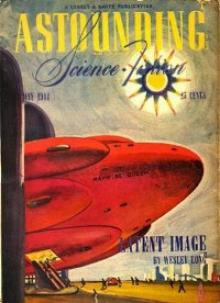 The Yehudi Principle
The Yehudi Principle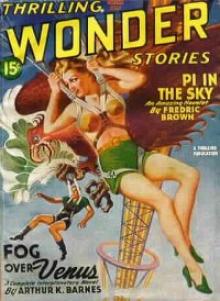 Pi in the Sky
Pi in the Sky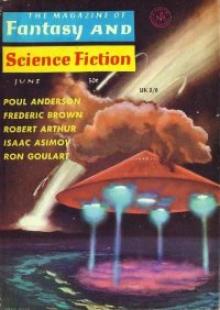 Eine Kleine Nachtmusik
Eine Kleine Nachtmusik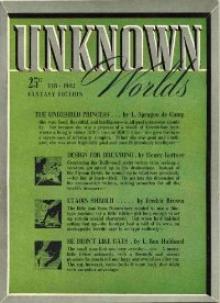 Etaoin Shrdlu
Etaoin Shrdlu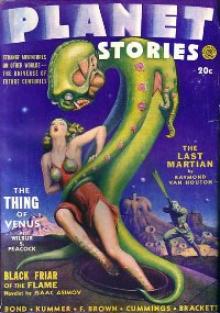 The Star Mouse
The Star Mouse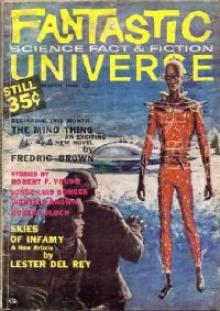 The Mind Thing
The Mind Thing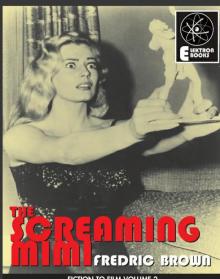 The Screaming Mimi
The Screaming Mimi The Fabulous Clipjoint
The Fabulous Clipjoint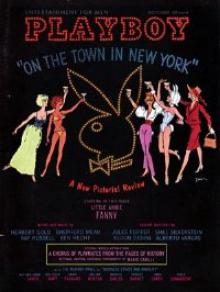 Puppet Show
Puppet Show It Didn't Happen
It Didn't Happen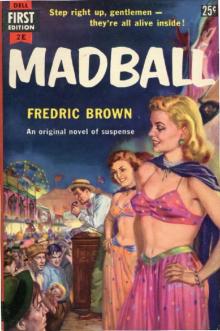 Madball
Madball Happy Ending
Happy Ending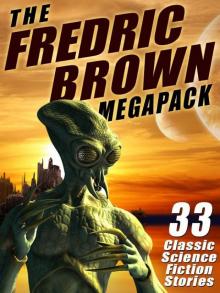 The Fredric Brown Megapack: 33 Classic Science Fiction Stories
The Fredric Brown Megapack: 33 Classic Science Fiction Stories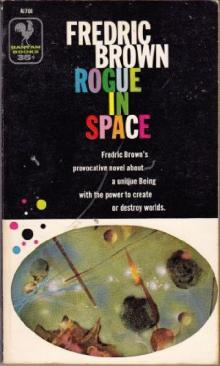 Rogue in Space
Rogue in Space Night of the Jabberwock
Night of the Jabberwock The Dead Ringer
The Dead Ringer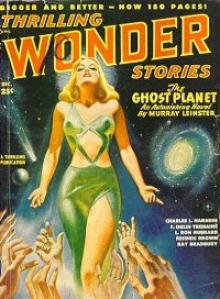 Knock
Knock We All Killed Grandma
We All Killed Grandma Space On My Hands
Space On My Hands The Collection
The Collection The Second Fredric Brown Megapack: 27 Classic Science Fiction Stories
The Second Fredric Brown Megapack: 27 Classic Science Fiction Stories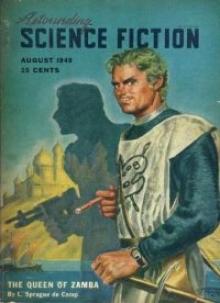 Letter to a Phoenix
Letter to a Phoenix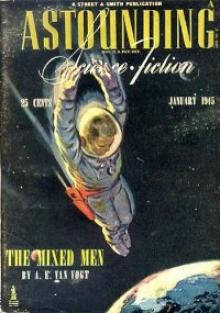 The Waveries
The Waveries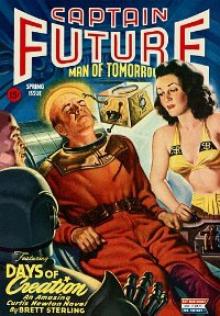 Nothing Sirius
Nothing Sirius The Deep End
The Deep End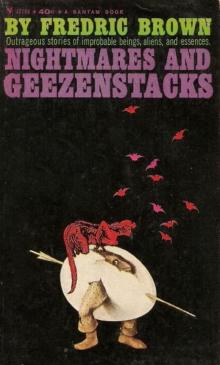 Nightmares & Geezenstacks
Nightmares & Geezenstacks Come and Go Mad
Come and Go Mad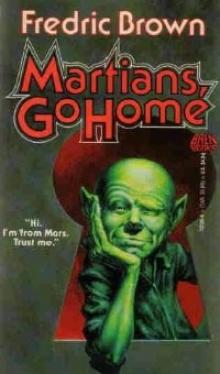 Martians, Go Home
Martians, Go Home